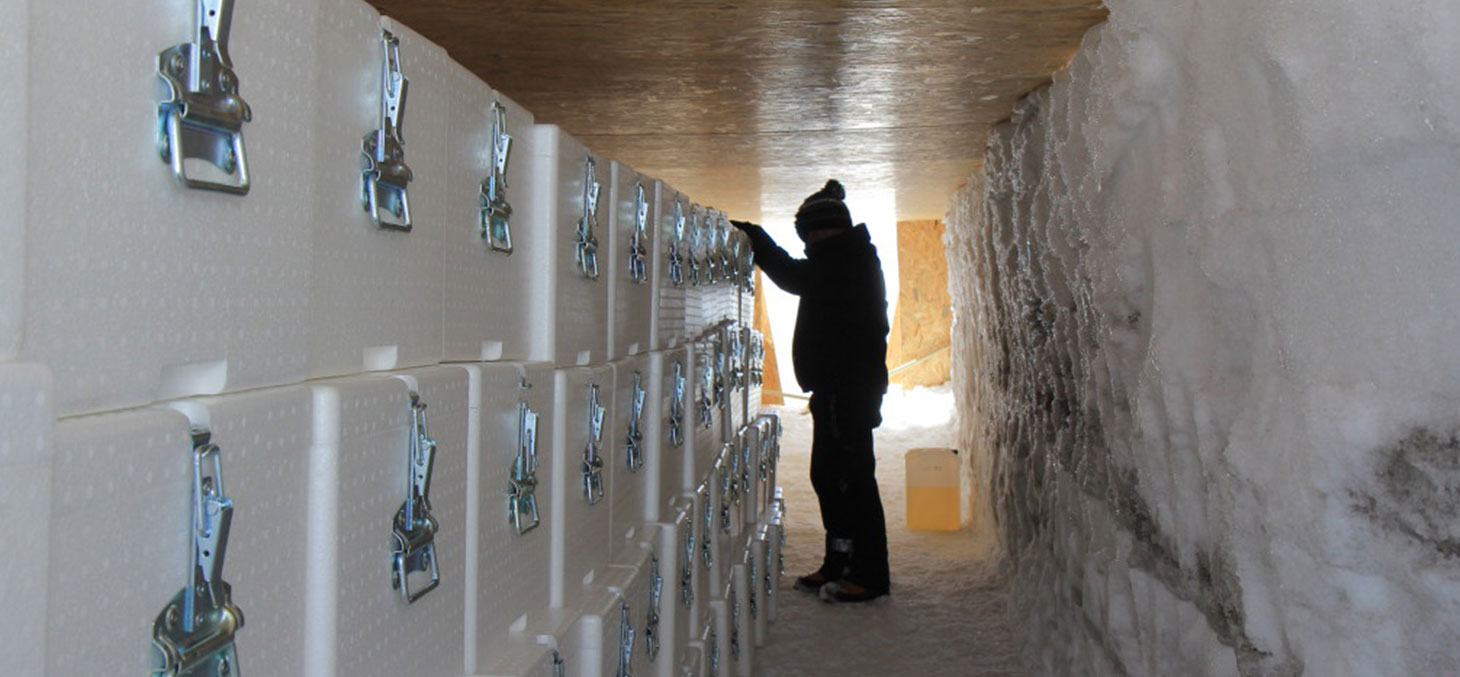Storage of the Ice Memory heritage ice cores in Antarctica officially approved by the Antarctic Treaty Consultative Meeting ATCM

As the 46th Antarctic Treaty Consultative Meeting (ATCM) concluded on May 30th, 2024 in Kochi, Kerala (India), a very important milestone has been reached by the Ice Memory Foundation. Indeed, storing heritage ice cores in Antarctica on a long-term basis - possibly hundreds to thousands of years as aims the Ice Memory Foundation - requires great attention in terms of environmental impact and a full consensus from the 57 parties of the Antarctic Treaty system. Antarctica is a unique land of peace and science, where long term governance relies on consensus of the State parties. After a 6-year advocacy in favor of the Ice Memory Sanctuary at Concordia Station and many field and modelling studies, the project has been accepted. A collective victory on a great milestone.
Any scientific activity on the icy continent requires the prior environmental assessment of all activities conducted in the Antarctic Treaty Area. Indeed, the Protocol on Environmental Protection to the Antarctic Treaty is covered by the Madrid Protocol which designated Antarctica as a “natural reserve, devoted to peace and science” in 1991. According to one of the major environmental principles of the Environment Protocol "activities in the Antarctic Treaty area shall be planned and conducted on the basis of information sufficient to allow prior assessments of, and informed judgments about, their possible impacts on the Antarctic environment and dependent and associated ecosystems and on the value of Antarctica for the conduct of scientific research."
From 2018, different aspects of the implementation of the cold ice core repository were presented, based on a solid principle of prevention. “At each annual meeting (ATCM) the Ice Memory initiative and its Antarctic aspects of long-term storage have been carefully documented and reported by the French and Italian ATCM delegations to all Parties. The procedures for evaluations took time, required accurate and scientific assessments and finally requested an Initial Environmental Evaluation (IEE)” said Jérome Chappellaz, Chair of IMF. The IEE is due when the likely impacts of an activity are no more than “a minor or transitory impact”.
From the field to the sanctuary in Antarctica, a dedicated protocol for sampling and packaging
The main risk addressed by Parties to the Antarctic Treaty concerned the possible introduction in Antarctica of non-native species being trapped in ice from different regions where Ice Memory collects ice cores. As to minimize further this risk, the ice cores already sampled - from Col du Dôme (FR), Illimani (BOL), Belukha (RUS), Elbrus (RUS), Grand Combin (CH), Colle Gnifetti (IT), Holtedahlfonna (NOR) and Colle del Lys (ITA) - have encountered the following rules edicted by the governance of the Ice Memory project: firstly packaged/conditioned in the field at the time of drilling, then during the intermediate storage in laboratories or commercial freezers, each individual ice core is stored in a dedicated packaging, hermetically sealed that aims to ensure isolation of samples from the environment. In addition, particular care will be brought in maintaining a suitable cold chain from the current storage sites to the ultimate repository in Antarctica. Avoiding ice core melting appears as the best way to avoid any dispersion of non-native species in the Antarctic environment.
Prevention and monitoring of the ice cores’ impact
The collection of ice cores - extremely precious environmental archives accumulated over centuries to millennia – coming from all over the planet, present a very low risk of non-native species introduction, but a formal assessment was needed. If ice cores may indeed contain important and various species, such as bacteria, pollen and other microorganisms potentially, the Ice Memory consortium highlighted that such microorganisms are already naturally present in Antarctica, transported long distances by atmospheric aerosols from places such as South America, or introduced by existing human activities. The environmental assessment definitely concluded that ice cores sampled of mountain glaciers won’t present any hazardous components for the Antarctic ecosystem.
An innovative and non-impacting ice cave for the Sanctuary
Built below the ground level directly into the snow - thanks to mechanical excavators - the dedicated snow caves, located at the Concordia Station - East Antarctic Plateau at a 3200 m altitude - is a natural, innovative and non-impacting solution. The studies and prototype cave tests at Concordia have been led by Italian and French polar logistical agencies (PNRA and IPEV). Relying on the snow natural material for the construction, in order to provide the least impacting solution, this 100% “natural” storage with no energy consumption required for refrigeration and no imported construction material will limit the impact on the Antarctic environment. But it will also provide the required solidity for many decades to come and it will be very easy to rebuild other snow caves in the future if needed. With a very low footprint through the age, this important aspect, approved by the ATCM will allow the long-term preservation in Antarctica better and safer than in commercial freezers.
From the Antarctic Treaty System to the governance of the ice memory heritage
The long-term governance of the Ice Memory Sanctuary, spanning decades and centuries, should ideally be placed under the auspices of international institutions to ensure that this legacy can be passed down through the generations, with no damage and with optimum governance. Since it raises today multiple legal issues, most of them unprecedented, and on which no clear answers can be given under existing international law, the Ice Memory Law and Governance Chair has been launched in 2023. This research chair aims to establish proposals for filling existing legal gaps and to propose a legal framework for the development of the Ice Memory heritage.
“Financing the collection of ice cores is now the most urgent challenge”
“In principle, we can start tomorrow to transport Ice Memory cores to Antarctica“ said Carlo Barbante, vice-chair of the Ice Memory Foundation . “The Ice Memory Foundation, encouraged by this strong and positive signal by ATCM, still needs strong financial support to accelerate the drilling operations at first". “Our challenge is still to drill 12 glaciers but operations on glaciers require money for logistical operation, as resources in terms of equipment, cold chain, shipping, etc”. This means that the support offered to the Foundation will help in this race against time. To support this heritage individually, the first step is to make a donation as to create a lasting legacy for future generations. Be sure that the Ice Memory Foundation is continuing its advocacy work, calling on diplomats, scientists and philanthropists to get involved.

